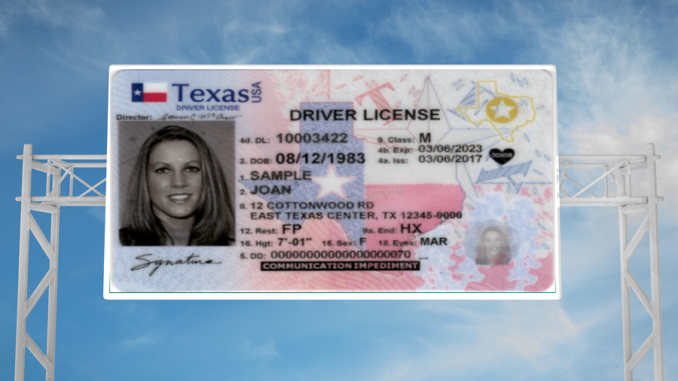
Losing your Texas driver’s license can be a hassle, but replacing it doesn’t have to be. Whether your license has been lost, stolen, or damaged, it’s crucial to get a replacement promptly to stay on the right side of the law. This guide will walk you through the process of replacing your Texas driver’s license, ensuring you’re back on the road legally and quickly.
Eligibility Criteria First things first, let’s ensure you’re eligible to replace your Texas driver’s license. Generally, anyone with a valid Texas license can request a replacement. However, certain conditions, such as a change in residency status or legal issues, might affect your eligibility. It’s important to verify these details before proceeding.
[adrotate banner=”4″]
Required Documentation To replace your license, you’ll need to provide some essential documents to confirm your identity and residency. Commonly required documents include a birth certificate, Social Security card, and proof of Texas residency (like a utility bill or lease agreement). Having these documents ready will streamline the process.
Support the YouTuber by Liking and Subscribing
The Replacement Process You have two options to replace your Texas driver’s license: online or in-person.
- Online Replacement Process: The Texas Department of Public Safety (DPS) website allows you to request a replacement license online, provided you meet certain criteria. This is the quickest and most convenient method.
- In-Person Replacement Process: If you prefer, or if online replacement is not available to you, you can visit your local DPS office. Remember to bring all required documents and prepare for a potential wait.
Fees and Payment Methods Replacing a driver’s license in Texas requires a fee, which varies based on the license type. Most major credit cards, checks, and cash are accepted. Check the latest fee structure on the Texas DPS website to ensure you bring the correct amount.
Processing Time and Delivery Typically, it takes a few weeks to receive your new license in the mail. If you need it sooner, inquire about expedited services, which might incur additional fees.
Special Cases For special cases like a commercial driver’s license (CDL) or a learner’s permit, the replacement process may vary slightly. Similarly, if you’re currently out of state or in the military, there are specific procedures to follow, detailed on the Texas DPS website.
Avoiding Future Loss or Damage To prevent future inconveniences, consider these tips:
- Store your license in a safe, consistent place.
- Avoid exposing it to elements that could cause damage, like water or direct sunlight.
Legal Implications Driving without a valid license is illegal and can lead to significant penalties. Always ensure you have a valid, unexpired license while driving.
Cruising down the open road with the wind in your hair is a classic image of freedom, but remember, that freedom hinges on responsibility. Operating a motor vehicle is a privilege, not a right, and one that necessitates a valid driver’s license. This legal document serves as your official certification that you possess the knowledge, skills, and training necessary to navigate the complexities of the road safely and responsibly. However, hopping behind the wheel without a valid license is not just a minor oversight; it’s a serious offense with potentially hefty consequences.
The gravity of driving without a license lies in the inherent risks it poses. Without proper training and testing, you’re essentially a hazard on the road, putting yourself and others at increased risk of accidents and injuries. This isn’t just speculation; it’s a fact substantiated by statistics. Studies consistently show that unlicensed drivers are significantly more likely to be involved in crashes, making them a danger to themselves and everyone else sharing the road. Recognizing this heightened risk, lawmakers have established stiff penalties to deter unlicensed driving. Depending on your location and prior offenses, getting caught driving without a license could result in hefty fines, license suspension, vehicle impoundment, or even jail time. These consequences can have a significant ripple effect, impacting your finances, transportation options, and even employment opportunities.
Support the YouTuber by liking and subscribing
Therefore, before you even consider getting behind the wheel, make sure you have a valid, unexpired driver’s license. It’s not just about complying with the law; it’s about demonstrating your commitment to responsible driving and the safety of yourself and others. Remember, the open road awaits, but only for those who are qualified and licensed to navigate it responsibly. So, prioritize getting your license in order, and then hit the road with confidence, knowing you’re doing your part to create a safer driving environment for everyone.
Conclusion Replacing your Texas driver’s license is a straightforward process when you know what to expect. By following these steps, you can quickly overcome the inconvenience of a lost or damaged license.
FAQs Q: Can I drive while waiting for my replacement license? A: Generally, yes, but it’s wise to carry your receipt or temporary documentation provided by the DPS.
Q: What if my license is about to expire? A: If your license is nearing expiration, consider renewing it instead of just replacing it.
Navigating the replacement of your Texas driver’s license can be smooth and hassle-free with the right information. Remember, keeping your license safe and up-to-date is not just a legal requirement but also a responsibility as a Texas driver.

